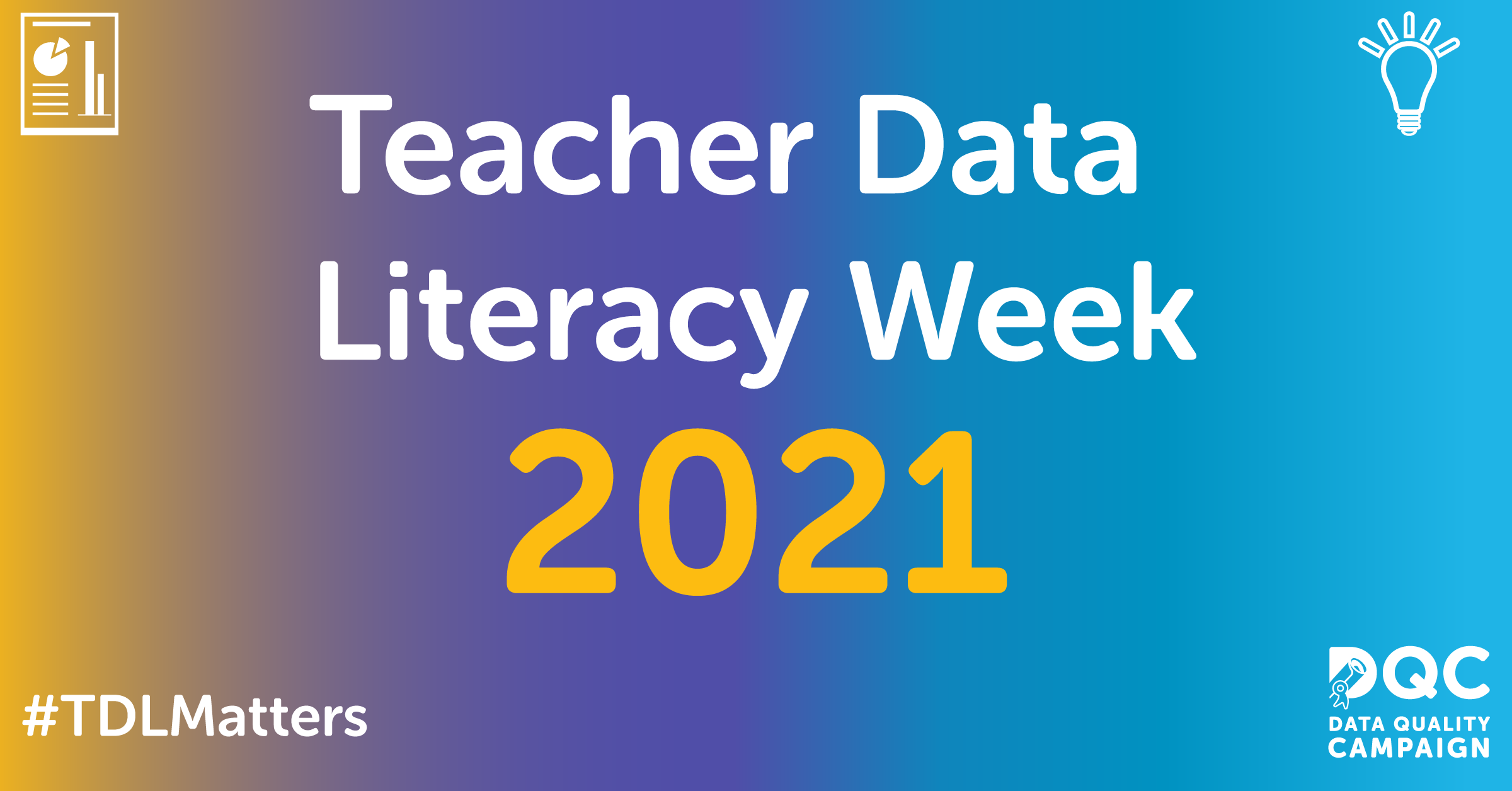Teacher Data Literacy Week is an opportunity to elevate why data-literate teachers are so important to student success and the actions that leaders can take to support teachers in building these skills. As educators continue to navigate the pandemic and look toward recovery, education data and teacher data literacy are crucial to student success. In this blog post, Caylah Green, former DQC fellow and DC Public Schools middle-school math teacher and team leader, reflects on how time and formalized schoolwide data tools impact how she uses data during the pandemic.
As I have spent much of this year reflecting on what type of data is most valuable now and moving forward, I have come to realize that any data collected is only as valuable as the amount of time spent on data analysis. This virtual school year has reemphasized the need for strong systems of data tracking and monitoring, and underscored the need for adequate time to analyze that data and plan next steps.
In years past, data has frequently existed in siloes with specific school-based teams owning private data trackers and goals. Teachers focused on instruction, social workers focused on social-emotional wellness, attendance counselors focused on attendance, so on and so forth. Traditional school schedules usually only allowed for content and/or grade-level collaboration, which further reinforced maintaining data within these siloes. This model only paints a partial picture for educators of the information needed to better understand where students are at any given moment.
During virtual learning, however, my school has focused on streamlining data collection and creating protected time to dig into the data to make sure teachers have the information they need to support students. This year, I have relied on aggregated data and increased planning time to align data analysis with student outcomes. It has been imperative to create streamlined processes that can be communicated schoolwide so that all educators are on the same page as we navigate through the virtual space. The team-based trackers we’ve always used now have shared language and symbols so that teachers and leaders can navigate various spaces without too much variation. Ultimately, the shared language helps us to be on the same page about students, regardless of what department we are in. This information is especially helpful because we have fewer communication barriers about what we are tracking and have more time to be student-centered around the implications of the data.
In addition to the team-based content trackers, my school depends on two main systems to monitor and analyze the bigger picture of student learning schoolwide. One system is for data input and the other, introduced by the district at the beginning of this school year, is for aggregating the data. These streamlined systems that speak to one another make data entry much easier and less time consuming. We bypass developing and organizing new iterations of similar spreadsheets and use more of our time on naming trends and developing strategies and programming to align with student needs.
One of the most notable changes that virtual learning has also afforded is a full day each week dedicated to team-based collaboration so that we can not only monitor and analyze content and grade-level data but also integrate attendance and family engagement data. The dedicated schoolwide planning time allows us to avoid schedule conflicts that happen when teachers and staff have different planning periods, and provides focused opportunities to work towards our shared goals. This full day is in addition to our hour of daily planning time, which we use to analyze formative assessment data with co-teachers so that we can customize our lessons.
Having a day each week to get messy with the data gives us the chance to really understand what is going on with each student and provides an opportunity to learn from one another’s challenges and strengths. While granular data analysis might remain at the team level, every member of the school community working to help students be successful needs to be aware of key takeaways and nuanced trends happening in every school space. With this information, we can better understand how these trends are integrated with other data points.
After transitioning to a fully virtual school model, I have a newfound appreciation for how much collaborative communication happened with colleagues during transition periods in the hallways or in the copy room before the school day. While there will certainly be a time and place for informal and unscheduled hallway debriefs in the future, my hope for next year is that these data-sharing processes remain formalized and protected to provide sufficient time to make meaning of the data we collect. Formalizing these processes would mean that each student has a robust network of professionals coming together to help them achieve.
This blog post is the second in a two-part series as part of DQC’s Teacher Data Literacy Week 2021. Don’t forget to join the conversation on social media throughout the week using #TDLMatters.


